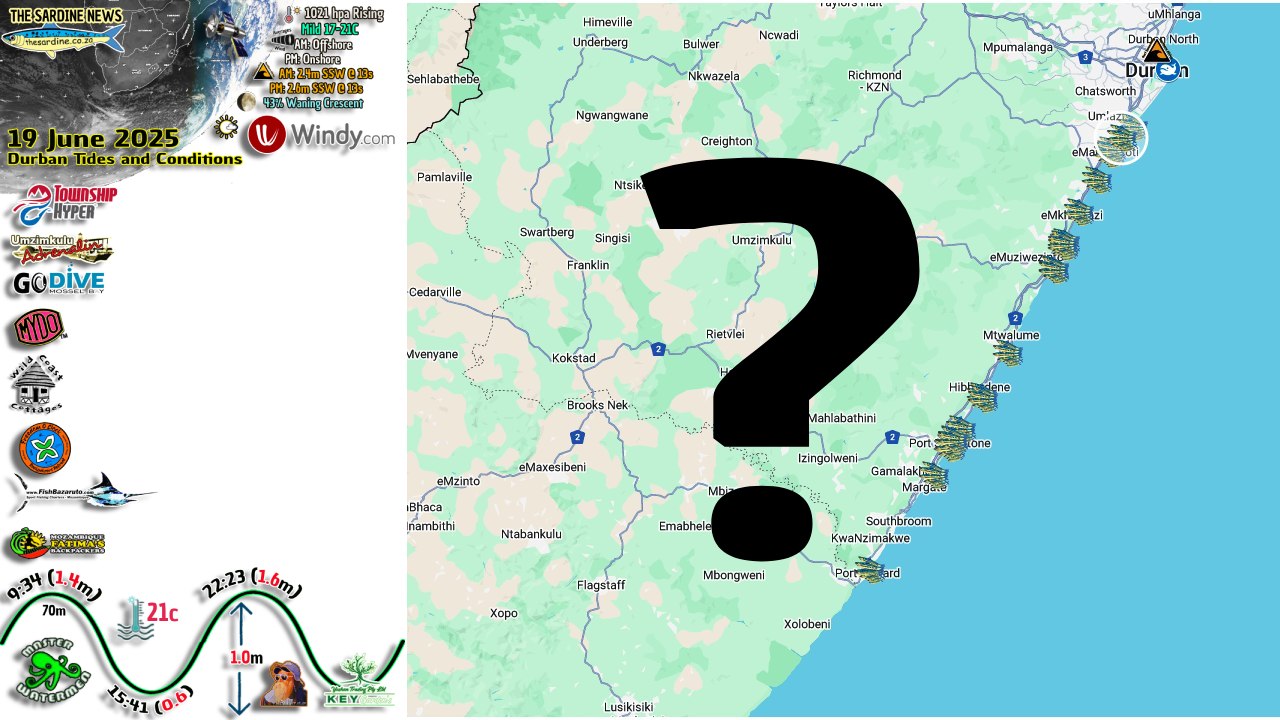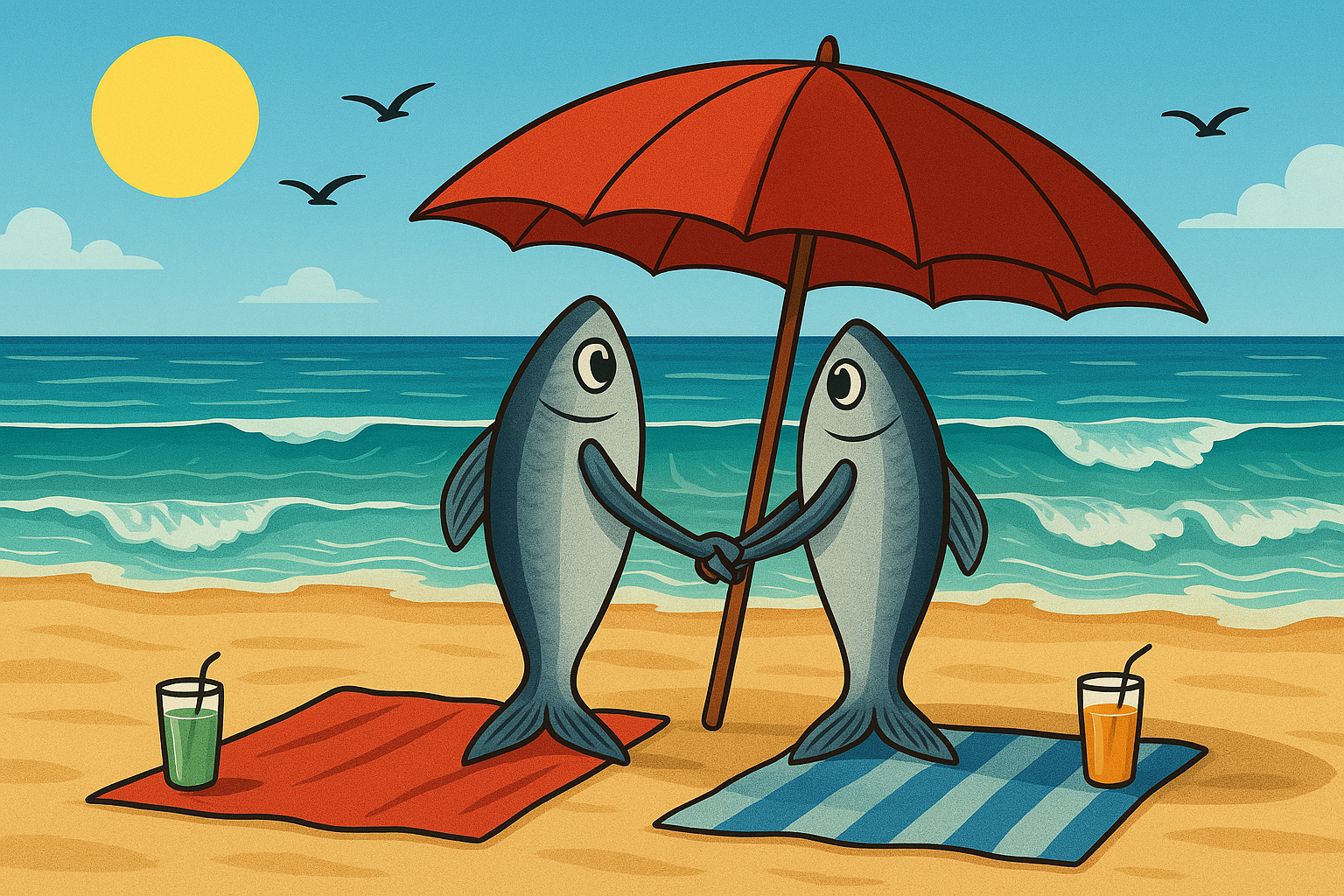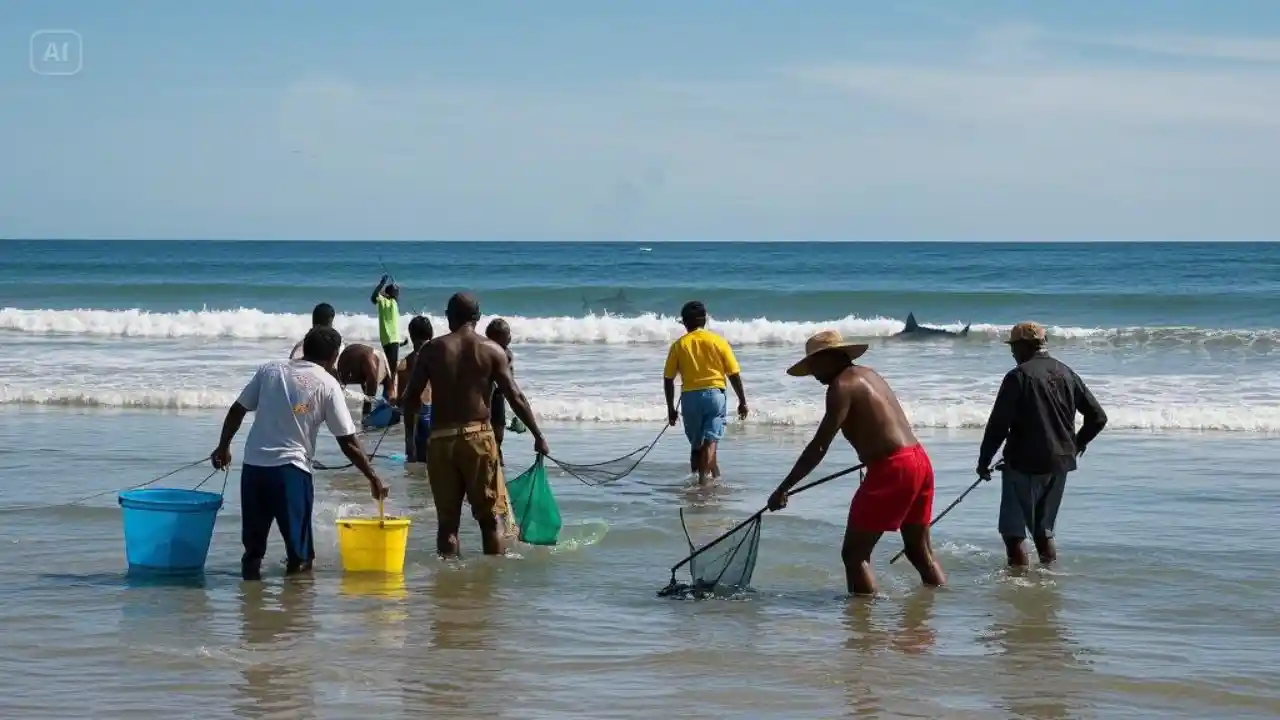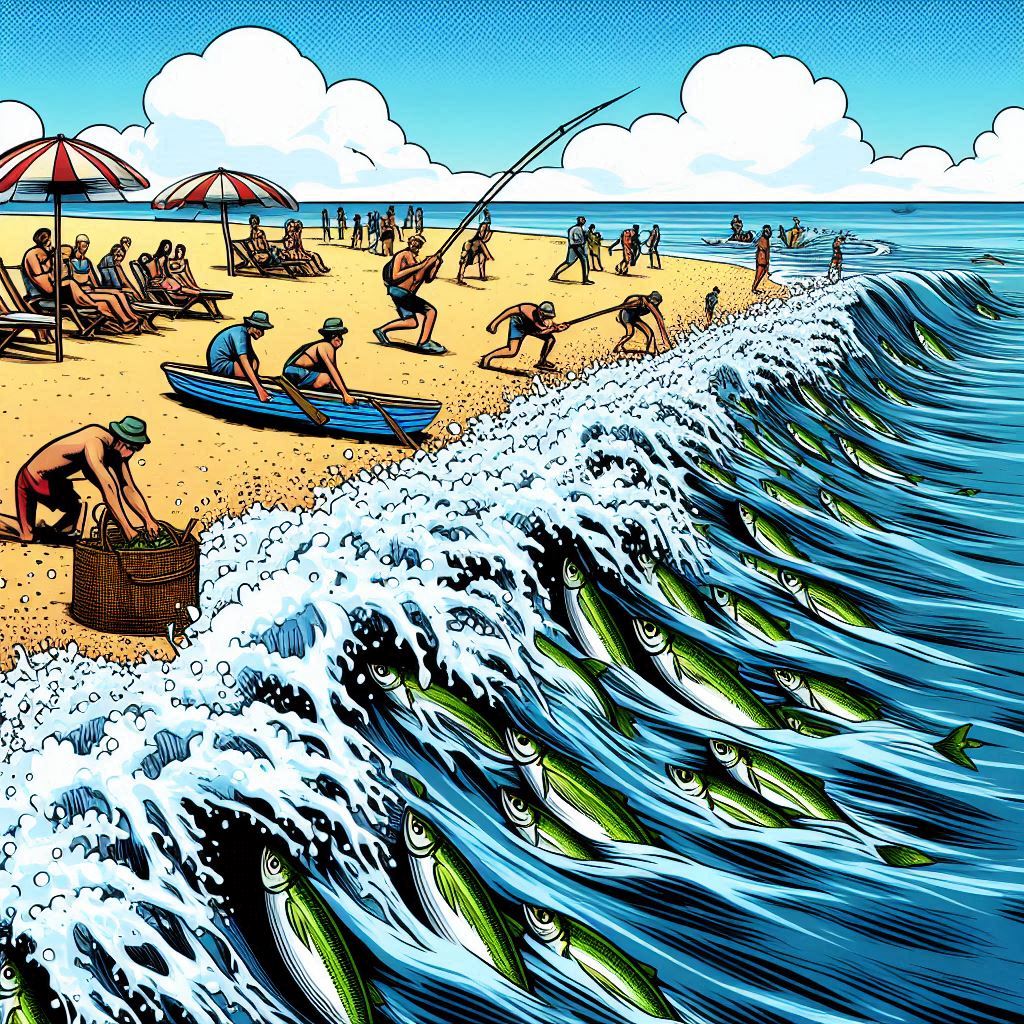
Where are the Sardines Today? by Jace, The Bear, Kevin and Sean
Where are the Sardines Today? by Jace, The Bear, Kevin and Sean #sardinerun2025 #sardinemigration
STOP PRESS: Nets are busy at Hibberdene but not that many fish coming out…lots of action…
Welcome back to the Sardine News
hi welcome back to the Sardine News
got a big sea a bit of a unruly conditions
the surf’s quite wild netters are out there
but it’s a bit difficult
it’s hard to spot the sardines and it’s all
they’re all scattered all over the place
they’re not like focused in one area
like they were when they first got here
the predators
and all the animals have just scattered them
but it’s still good news
there’s still lots of sardines coming anyway
we’re gonna get into the reports
we starting we’re gonna go in reverse
we’re gonna start right now with Jace at Addington
he’s gonna
he’s reporting from the boat that’s like almost live
then we’ve got Jason at the bluff
he’s gonna check in for us in that area
and then we’ve also got Kevin
gonna check in with us from down in the Transkei
so we pretty much got the whole coast covered
so let’s go to Jace in Durban
thank you very much Jace
by the way for the reports Ciao
all the fish and more
how’s it guys here the boys are sunbathing off Durban
spectacular view on the background
if anyone’s got mutton and cabbage
braised mutton and cabbage with roti
uh you’re welcome to DM US and uh
we will come ashore and pick it up
but for now we’re sunbathing
enjoying it chilling
uh what do you feel like eating today
action
uh
tortoise and sheep head no
KFC KFC yeah you right now
breakfast in the ocean breakfast in the ocean
yeah yeah
Mario some sheep and samosas should do
sheep and samosas
slow mo
KFC KFC
okay so we got KFC uh
sheep and uh
and roti and breakfast I’m saying braise mutton
and that’s what I feel like eating
braise mutton and cabbage
yeah but guys
that’s the lighter side of it
guys having some fun out at sea
when there’s no fish
then we take the good and the bad and we enjoy it
so that’s what’s happening here
see there’s other boats out here as well
hi peeps and welcome to another bear report
this time we are at Bluff Durban
KZN South Africa
this is a Cave Rock here on my left
that’s the tidal pool right
it’s a tidal pool cave
guys are getting a Lekker wave here this morning
hey
look at that yeah
it looks like the shallows has beaned up a bit
with the groundswell
there’s probably some fish out deeper
hey but every now and then hey
some kraakers coming through
hey
these are the smaller sets now
but in between we have some decent walls
yo where’s the viz
uh Widenham looks very clean at the moment
uh but the surf is is kraaking there on the south there
Southbroom looks a good 2
two and a half meters further down south
as regards to sardines today
it seems like only the netters at Addington are out
I don’t know if they got a full uh
net this morning but yeah
they were pulling a net about 15 minutes ago
at opposite Addington Hospital in Durban town eh
yoh check that bomber
hey wax those sticks
go and do some tricks
that’s an Aweh from the Bear
and as always dive straight and safe spears
morning everyone
this is Kevin at Qora Mouth just north of Mazaeppa Bay
Southern Transkei
yeah just an update on what’s happening here chaps
there’s still a lot of sardines around
you know I’m seeing birds everywhere
I’m not diving but moving around
and that’s a good sign because these gannets
if you watch them they
they move towards the sardines
and a lot of the birds this morning
were moving north of me
and I’m seeing birds now moving everywhere here
um going north
going south not flying in formation
so they’re not going long distance
they’re just kind of looking and searching
so yeah um
I think there’s still lots more sardines coming
headed towards KZN we know the mother lode passed about
uh 4
5 days ago probably reaching Port St Johns pretty soon
but they might have gone out deep
so we just gonna have to wait and watch
but it’s not over guys
uh still plenty more coming to KZN
the season is not nearly done yet anyway
we’ll keep you updated as things happen
don’t forget to like and subscribe cheers
okay thanks team
thanks everybody for checking in
hopefully
some more action will transpire during the afternoon
like to thank the members who have joined the channel
it’s unbelievable thank you very
very very much
you can like and subscribe
that really helps too but if you join
you get to join the Sardine Hotline
and you become part of this central nervous network
of the Sardine News Network
and you never miss a single sardine
ciao ciao
Sardines and Sighting Maps
We have started the 2025 Sardine Run Map! Download our app to your phone or device, accept notifications, and you will never miss a single sardine.
2024 was a thrilling year for sardines. All the action has been logged right here on The Sardine News. The 2024 map has been viewed 200 000 times and just keeps going.
Which led us to decide to keep the map live. And keep adding unique marine animal sightings and events. That occurs non-stop all year round. Last year we started to log more whale and dolphin sightings. And we even had a shipwreck! This year we have had two sailboat incidents already. PLUS, we have already logged some sardines!
Here are the links to existing and past Sardine Sighting Maps…
2024 Sardine Map
2023 Sardine Map
2021 Sardine Map
Channels
Brucifire Surf Retorts – highly entertaining surf reporting
Master Watermen – news from way down deep
The Sardine News – neva miss a single sardine
FishBazaruto – 1000 pounds plus
MYDO Tackle Talk – highly technical sport fishing
Surf Launching Southern Africa – getting out there safely
Water Woes – complain about your municipality here
Websites
umzimkulu.co.za – self-catering right on the Umzimkulu River
umzimkuluadrenalin.co.za – will get you right out and onto the edge
thesardine.co.za – never miss a single sardine
masterwatermen.co.za – news from under water
fishbazaruto.com – dreams
brucifire.co.za – surf retorts




